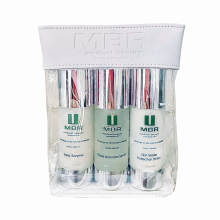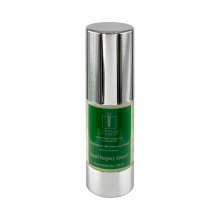Scars
Scarring typically occurs around a wound or lesion that is extensive enough to damage the skin permanently. The primary factor determining scar formation is naturally the size, type, and location of the wound or lesion and how the affected area is treated.
Scars occur as a result of the natural healing process. Rather than concerning itself with vanity, the body quickly shifts into survival mode making quick, sloppy repairs with basic materials to close off any potential entry-point for infection into the body. As a result, fresh scars tend to be irregular, prominent, and sometimes reddish as blood vessels reform.
Once the scar is formed, the body will fix it up by replacing the hastily assembled type III collagen with type I, which is stronger. The capillaries in time recede and what is left is usually a flat, pale spot that more or less represents the original wound or lesion. Scars will typically be lighter than the surrounding skin due to the lack of pigment cells, though, in dark-skinned people, the area may be darker or hyper-pigmented.
Of course, a person’s physiological makeup - genetics, age, etc. - also plays a role in how well someone heals. Sometimes scarring can be minimized or modified by using specific scar-inhibiting agents such as silicone gel sheets.
Products preventing scar fromation
Irregular scarring
Hypertrophic scars form when the body does not follow up on its early wound-closing phase. The resulting scar permanently resembles a fresh one. They are raised, firm, and red in color due to the body not replacing collagen or suppressing capillary growth. As a result, the scar never properly fades or diminishes.
Like hypertrophic scars, keloids also form due to the body’s inability to update the scar tissue properly; however, whereas hypertrophic scars stay the same shape and area as the original wound, keloids extend beyond and do not regress. Keloids tend to be a genetic trait and occur more frequently in dark-skinned people.
Atrophic scars are pits or saucer-like depressions that occur from excessive degradation of collagen in the dermal layer. Atrophic scars typically happen as a result of acne or chickenpox.



